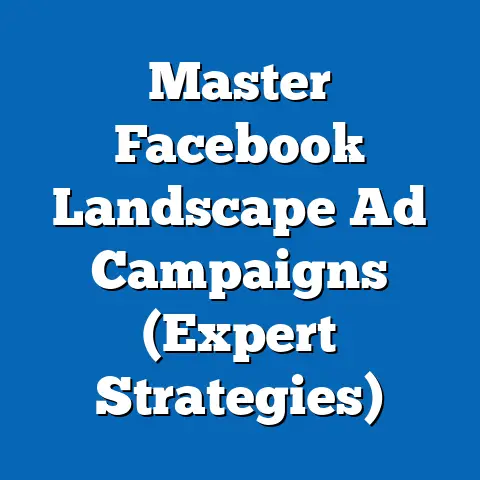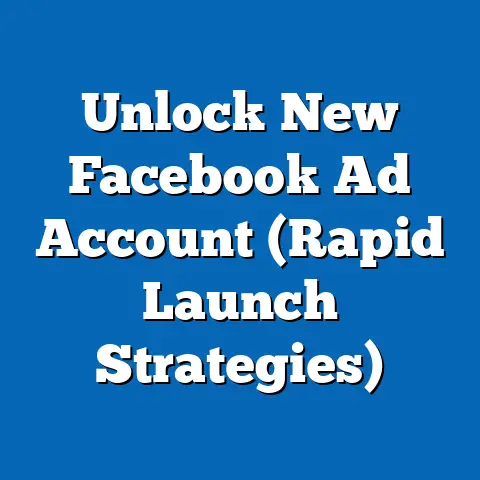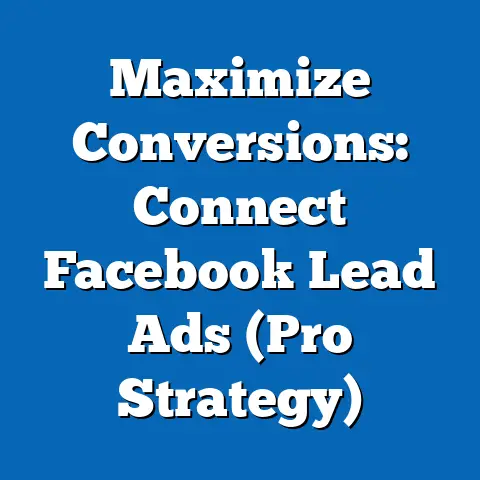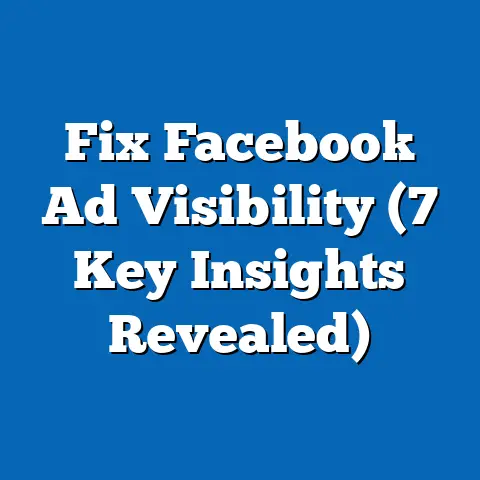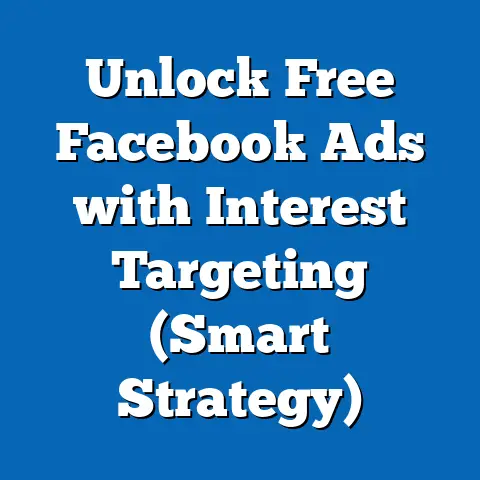Mastering Facebook Ads Descriptions (Unlock Character Secrets)
Facebook advertising can feel like navigating a labyrinth. I remember when I first started, I was completely overwhelmed by the sheer number of options, targeting parameters, and ad formats. But one thing quickly became clear: a killer ad description can make or break your campaign. The challenge, however, lies in crafting compelling messages within the constraints of character limits. It’s like writing a haiku – you need to be concise, creative, and impactful. And let’s be honest, who really enjoys writing haikus?
Many advertisers struggle to fit their message within these limits, often sacrificing clarity and impact. A poorly written ad description can lead to low click-through rates (CTR) and ultimately, wasted ad spend. Imagine crafting the perfect visual, targeting the ideal audience, only to have your ad fall flat because of a lackluster description. Ouch!
In this guide, I’m going to show you how to master the art of Facebook Ads descriptions. I’ll break down the character limits, share proven techniques for writing engaging copy, analyze successful ad examples, and provide you with the tools you need to create descriptions that convert. By the end of this article, you’ll be equipped to unlock the character secrets and significantly enhance your ad performance. Let’s dive in!
Section 1: Understanding Facebook Ads Character Limits
Character limits on Facebook Ads aren’t arbitrary; they’re designed to optimize the user experience and ensure ads are easily digestible on various devices. It might seem restrictive, but understanding these limits is the first step towards crafting more effective ads.
Character Limits Explained
Facebook Ads have different components, each with its own character limit. Here’s a breakdown:
- Headline: Typically around 25-40 characters. This is the first thing people see, so make it count!
- Primary Text (Body Text): Around 125 characters are generally recommended. While Facebook often allows longer text, shorter snippets tend to perform better.
- Description (Link Description): Around 30 characters. This appears below the headline and link, offering a brief summary.
- Call-to-Action (CTA) Button: Limited to pre-defined options like “Shop Now,” “Learn More,” etc.
These limits can vary slightly depending on the ad placement (e.g., Facebook News Feed, Instagram Feed, Audience Network). I always recommend checking the latest Facebook Ads Guide for the most up-to-date specifications. I learned this the hard way when I spent hours crafting what I thought was the perfect ad, only to have it rejected because the description was two characters over the limit! Talk about frustrating.
The Psychology of Character Limits
There’s a psychological reason why Facebook imposes these limits. In today’s fast-paced digital world, attention spans are shorter than ever. People are constantly bombarded with information, so they tend to skim rather than read thoroughly.
Short, concise descriptions are more likely to capture attention and be remembered. They force you to distill your message down to its essence, highlighting the most important benefits and creating a sense of urgency. Think of it like an elevator pitch – you have a limited time to make a lasting impression.
The Importance of Clarity and Brevity
Clarity and brevity are crucial for several reasons:
- Improved Comprehension: Short, simple sentences are easier to understand.
- Increased Engagement: Concise descriptions are more likely to grab attention and encourage clicks.
- Mobile Optimization: Shorter text displays better on smaller screens.
I’ve seen countless ads with overly long and convoluted descriptions. They may contain valuable information, but they’re often ignored because they require too much effort to read. Remember, people are scrolling through their feeds – you need to grab their attention quickly and efficiently.
Example:
- Bad: “Our revolutionary new software platform offers a comprehensive suite of tools designed to streamline your marketing efforts and boost your ROI. Learn more about how our innovative solution can transform your business today!” (Way too long and generic)
- Good: “Boost your ROI with our marketing software. Easy to use. Proven results. Learn More!” (Concise, clear, and benefit-driven)
Common Pitfalls to Avoid:
- Rambling Sentences: Avoid long, complex sentences that are difficult to follow.
- Jargon and Technical Terms: Use language that your target audience understands.
- Redundancy: Eliminate unnecessary words and phrases.
- Over-Emphasis on Features: Focus on the benefits, not just the features.
Takeaway: Understanding character limits is the foundation for crafting effective Facebook Ads descriptions. Prioritize clarity, brevity, and benefit-driven messaging to capture attention and drive results.
Next Step: Review your existing Facebook Ads and identify any descriptions that are too long or unclear. Rewrite them using the principles discussed in this section.
Section 2: Crafting Compelling Ad Descriptions
Now that you understand the importance of brevity, let’s dive into the art of crafting compelling ad descriptions that grab attention and drive action. It’s about more than just staying within the character limits; it’s about using those limited characters to tell a story, highlight a benefit, and entice people to click.
Key Elements of a Successful Ad Description
A successful ad description typically includes the following elements:
Techniques for Writing Engaging Descriptions
Here are some proven techniques for writing engaging Facebook Ads descriptions:
- Storytelling: People love stories. Use your description to tell a brief, compelling story that resonates with your target audience.
- Example: “Tired of endless laundry? Meet Washly, the app that picks up, washes, and delivers your clothes – all with a tap. Reclaim your weekend!”
- Using Power Words: Power words are persuasive words that evoke emotion and create a sense of urgency. Examples include “Free,” “New,” “Exclusive,” “Guaranteed,” and “Limited Time.”
- Example: “Get your FREE trial of our premium fitness app! Limited time offer. Start your transformation today!”
- Addressing Pain Points: Identify the problems that your target audience is facing and show them how your product or service can provide a solution.
- Example: “Struggling to manage your social media? Our all-in-one platform makes it easy to schedule posts, track analytics, and engage with your audience. Get started today!”
- Creating a Sense of Scarcity or Urgency: Encourage people to take action by creating a sense of scarcity or urgency.
- Example: “Only 5 spots left in our upcoming workshop! Learn the secrets to successful Facebook advertising. Register now!”
- Using Emojis (Sparingly): Emojis can add personality and visual appeal to your descriptions, but use them sparingly and make sure they’re relevant to your message.
- Example: “🍕 Craving delicious pizza? Order online and get 20% off your first order! 🚚💨”
- Example: “Tired of endless laundry? Meet Washly, the app that picks up, washes, and delivers your clothes – all with a tap. Reclaim your weekend!”
- Example: “Get your FREE trial of our premium fitness app! Limited time offer. Start your transformation today!”
- Example: “Struggling to manage your social media? Our all-in-one platform makes it easy to schedule posts, track analytics, and engage with your audience. Get started today!”
- Example: “Only 5 spots left in our upcoming workshop! Learn the secrets to successful Facebook advertising. Register now!”
- Example: “🍕 Craving delicious pizza? Order online and get 20% off your first order! 🚚💨”
I’ve found that A/B testing different techniques is the best way to determine what resonates most with your target audience. Try different headlines, descriptions, and calls-to-action to see what generates the highest CTR and conversion rates.
Tailoring Descriptions to Target Audience
One of the biggest mistakes I see advertisers make is using generic descriptions that don’t speak directly to their target audience. Your ad description should be tailored to the specific interests, needs, and pain points of the people you’re trying to reach.
Here’s how to tailor your descriptions:
- Know Your Audience: Conduct thorough audience research to understand their demographics, interests, behaviors, and pain points.
- Use Their Language: Use the same language and tone that your target audience uses. Avoid jargon or technical terms that they might not understand.
- Address Their Specific Needs: Highlight the benefits of your product or service that are most relevant to their specific needs.
- Speak Directly to Them: Use “you” and “your” to create a personal connection.
Example:
Let’s say you’re advertising a yoga studio. Here’s how you might tailor your description to different target audiences:
- Busy Professionals: “Stress eating your lunch? 🧘♀️ Find your zen with our lunchtime yoga classes. Re-energize and conquer your day!”
- New Moms: “Feeling overwhelmed? 🤱 Connect with other moms and find your inner peace with our postnatal yoga classes. Baby-friendly!”
- Seniors: “Improve your flexibility and balance with our gentle yoga classes. Senior discounts available. Call today!”
Tips for Conducting Audience Research:
- Facebook Audience Insights: This tool provides valuable insights into the demographics, interests, and behaviors of your target audience.
- Customer Surveys: Ask your existing customers about their needs, pain points, and preferences.
- Social Media Listening: Monitor social media conversations to see what people are saying about your industry and your competitors.
Takeaway: Crafting compelling ad descriptions requires a combination of creativity, strategy, and audience understanding. Use the techniques and tips discussed in this section to write descriptions that grab attention, highlight benefits, and drive action.
Next Step: Review your target audiences and brainstorm different ad descriptions that are tailored to their specific needs and interests. A/B test these descriptions to see which ones perform best.
Section 3: Analyzing Successful Facebook Ads
Theory is great, but seeing real-world examples is even better. Let’s take a look at some successful Facebook Ads and analyze what makes their descriptions so effective. By understanding the strategies used by top advertisers, you can learn how to apply them to your own campaigns.
Case Studies of High-Performing Ads
Case Study 1: Dollar Shave Club
- Ad Description: “Stop paying a fortune for razors. Get high-quality blades delivered to your door for just a few bucks a month.”
- Why It Works: This description is concise, clear, and addresses a common pain point (expensive razors). It highlights the value proposition (high-quality blades at an affordable price) and makes it easy to understand the offer. The brand voice is also casual and relatable, which resonates with their target audience.
- Key Takeaway: Simplicity and value are key.
Case Study 2: Airbnb
- Ad Description: “Dreaming of your next getaway? Discover unique homes and experiences around the world. Book your adventure today!”
- Why It Works: This description taps into people’s desire for travel and adventure. It uses evocative language (“dreaming,” “unique,” “adventure”) to create an emotional connection. The call-to-action is clear and encourages people to explore their options.
- Key Takeaway: Evoke emotion and inspire wanderlust.
Case Study 3: MasterClass
- Ad Description: “Learn from the best. Take online classes from world-renowned experts in various fields. Unlock your potential today!”
- Why It Works: This description highlights the unique selling proposition of MasterClass (learning from experts). It appeals to people’s desire for self-improvement and personal growth. The call-to-action is clear and encourages people to explore the course offerings.
- Key Takeaway: Highlight your unique selling proposition and appeal to aspirations.
Case Study 4: Shopify
- Ad Description: “Start your online store today. Easy-to-use platform with all the tools you need to succeed. Free trial available.”
- Why It Works: This description is straightforward and addresses the pain points of starting an online business. It highlights the ease of use and the comprehensive features of the platform. The free trial offer reduces the risk for potential customers.
- Key Takeaway: Address pain points and offer a risk-free trial.
Lessons Learned from the Best
Here are some key lessons we can learn from these successful Facebook Ads:
- Know Your Audience: Tailor your description to the specific interests, needs, and pain points of your target audience.
- Highlight Your Unique Selling Proposition: What makes your product or service different from the competition?
- Focus on Benefits, Not Just Features: Explain how your product or service will improve the user’s life.
- Use Clear and Concise Language: Avoid jargon and technical terms.
- Include a Strong Call-to-Action: Tell people exactly what you want them to do.
- A/B Test Everything: Continuously test different headlines, descriptions, and calls-to-action to see what performs best.
The Role of A/B Testing:
A/B testing is essential for refining your ad descriptions and maximizing their effectiveness. By testing different variations of your descriptions, you can identify which ones resonate most with your target audience and generate the highest CTR and conversion rates.
Here are some things you can A/B test:
- Headlines: Try different wording and phrasing to see which headlines grab the most attention.
- Descriptions: Test different value propositions, emotional appeals, and storytelling techniques.
- Calls-to-Action: Experiment with different calls-to-action to see which ones drive the most conversions.
- Emojis: Test whether or not emojis improve or detract from the performance of your ads.
Takeaway: Analyzing successful Facebook Ads can provide valuable insights into what works and what doesn’t. By learning from the best and continuously A/B testing your own descriptions, you can significantly improve the performance of your campaigns.
Next Step: Find examples of successful Facebook Ads in your industry and analyze their descriptions. Identify the key elements that make them effective and brainstorm how you can apply those strategies to your own ads.
Section 4: The Role of Visuals and Descriptions
While compelling ad descriptions are crucial, they don’t operate in a vacuum. The visuals you use in your Facebook Ads play an equally important role in capturing attention and conveying your message. When visuals and descriptions work together seamlessly, they create a powerful synergy that can significantly boost your ad performance.
Integrating Visuals with Text
Visuals and text should complement each other, creating a cohesive and engaging experience for the user. Here are some tips for integrating visuals with text:
- Choose Relevant Visuals: Select visuals that are directly related to your product or service and that resonate with your target audience.
- Use High-Quality Images and Videos: Low-quality visuals can damage your brand image and deter people from clicking on your ad.
- Keep Visuals Simple and Uncluttered: Avoid visuals that are too busy or distracting.
- Use Visuals to Highlight Key Benefits: Use visuals to showcase the key benefits of your product or service.
- Ensure Visuals Are Optimized for Mobile: Make sure your visuals look good on smaller screens.
I’ve seen many ads where the visual and the text seem completely disconnected. This can be confusing for the user and can lead to lower engagement. The key is to create a seamless connection between the visual and the text, so that they work together to tell a compelling story.
Using Visual Elements Strategically
Here are some specific ways you can use visual elements strategically to enhance your ad descriptions:
- Show, Don’t Just Tell: Use visuals to show people what your product or service can do for them. For example, if you’re advertising a weight loss program, show a before-and-after photo.
- Use Visuals to Create Emotion: Use visuals to evoke emotion and connect with your target audience on a deeper level. For example, if you’re advertising a travel agency, show photos of beautiful destinations.
- Use Visuals to Highlight Key Features: Use visuals to highlight the key features of your product or service. For example, if you’re advertising a new smartphone, show close-up photos of its camera, screen, and other features.
- Use Visuals to Show Social Proof: Use visuals to show that other people are using and enjoying your product or service. For example, show photos of happy customers or testimonials.
Example:
Let’s say you’re advertising a new line of organic skincare products. Here’s how you might use visuals to enhance your ad description:
- Description: “Nourish your skin with our new line of organic skincare products. Made with natural ingredients and free of harsh chemicals. Get glowing skin today!”
- Visual: A close-up photo of a woman with radiant, healthy-looking skin, using one of your skincare products.
In this example, the visual complements the description by showing the desired result (glowing skin) and reinforcing the message that the products are made with natural ingredients.
The Importance of Branding Consistency:
Branding consistency is crucial for building trust and recognition. Make sure that your visuals and descriptions are consistent with your brand’s overall style, tone, and messaging. Use the same colors, fonts, and imagery across all of your ads to create a cohesive and recognizable brand identity.
Takeaway: Visuals and descriptions are two sides of the same coin. By integrating them effectively and using visual elements strategically, you can create more engaging and persuasive Facebook Ads.
Next Step: Review your existing Facebook Ads and evaluate how well your visuals and descriptions work together. Identify areas where you can improve the integration and create a more cohesive message.
Section 5: Tools and Resources for Mastering Facebook Ads Descriptions
Mastering Facebook Ads descriptions is an ongoing process. Fortunately, there are many tools and resources available to help you improve your skills and optimize your campaigns.
Recommended Tools
Here are some tools that can assist you in writing and optimizing ad descriptions:
- Character Count Tools: These tools help you stay within the character limits for different ad components. Examples include Character Count Online and Letter Count.
- Headline Analyzer Tools: These tools analyze your headlines and provide feedback on their effectiveness. Examples include CoSchedule Headline Analyzer and Sharethrough Headline Analyzer.
- Grammarly: This tool helps you improve your grammar, spelling, and writing style.
- Facebook Ads Library: This tool allows you to see examples of ads that are currently running on Facebook and Instagram. This can be a great source of inspiration and ideas.
- Facebook Ads Manager: This is the primary tool you’ll use to create and manage your Facebook Ads campaigns. It provides valuable data on your ad performance, including CTR, conversion rates, and cost per click.
I rely heavily on the Facebook Ads Library for inspiration. It’s like a secret weapon for seeing what’s working for other advertisers in my niche. Just remember, inspiration is different than imitation!
Resources for Continued Learning
Here are some resources where you can further your knowledge on Facebook Ads and effective ad writing:
- Facebook Blueprint: This is Facebook’s official learning platform, offering courses and certifications on various aspects of Facebook advertising.
- Industry Blogs: Follow industry blogs like Social Media Examiner, HubSpot Blog, and Neil Patel’s Blog for the latest news, trends, and best practices in Facebook advertising.
- Online Courses: Platforms like Udemy and Coursera offer a wide range of courses on Facebook advertising and digital marketing.
- Facebook Groups and Communities: Join Facebook groups and communities related to Facebook advertising to connect with other marketers, share tips, and ask questions.
- Books on Facebook Advertising: There are many excellent books on Facebook advertising, such as “Facebook Advertising: An Hour a Day” by Corey Eridon and “The Ultimate Guide to Facebook Advertising” by Perry Marshall.
Takeaway: Mastering Facebook Ads descriptions requires continuous learning and experimentation. Utilize the tools and resources discussed in this section to stay up-to-date on the latest trends and best practices, and to optimize your campaigns for maximum results.
Next Step: Explore the tools and resources mentioned in this section and identify the ones that are most relevant to your needs. Commit to spending time each week learning about Facebook advertising and improving your ad writing skills.
Conclusion
We’ve covered a lot of ground in this guide, from understanding character limits to crafting compelling narratives and integrating visuals effectively. The key takeaway is this: mastering Facebook Ads descriptions is crucial for driving results.
Remember, your ad description is often the first impression you make on potential customers. Make it count! By prioritizing clarity, brevity, and benefit-driven messaging, you can capture attention, highlight your unique selling proposition, and entice people to click on your ad.
Here’s a quick recap of the key points:
- Understand Facebook Ads character limits.
- Craft compelling narratives that resonate with your target audience.
- Use power words and emotional appeals to create a sense of urgency.
- Integrate visuals effectively to enhance your message.
- A/B test everything to optimize your campaigns for maximum results.
- Continuously learn and adapt to the ever-changing landscape of Facebook advertising.
Now it’s your turn to put these insights into practice. I encourage you to review your existing Facebook Ads campaigns and identify areas where you can improve your descriptions. Experiment with different techniques, track your results, and continuously refine your approach.
And most importantly, don’t be afraid to be creative! Facebook advertising is a dynamic and evolving field, so there’s always room for innovation and experimentation. I believe that by mastering the art of Facebook Ads descriptions, you can unlock the character secrets and significantly enhance the performance of your campaigns.
Now go out there and create some amazing ads! I’d love to hear about your experiences and successes in mastering ad descriptions. Share your thoughts and questions in the comments below. Let’s learn from each other and build a community of successful Facebook advertisers!

